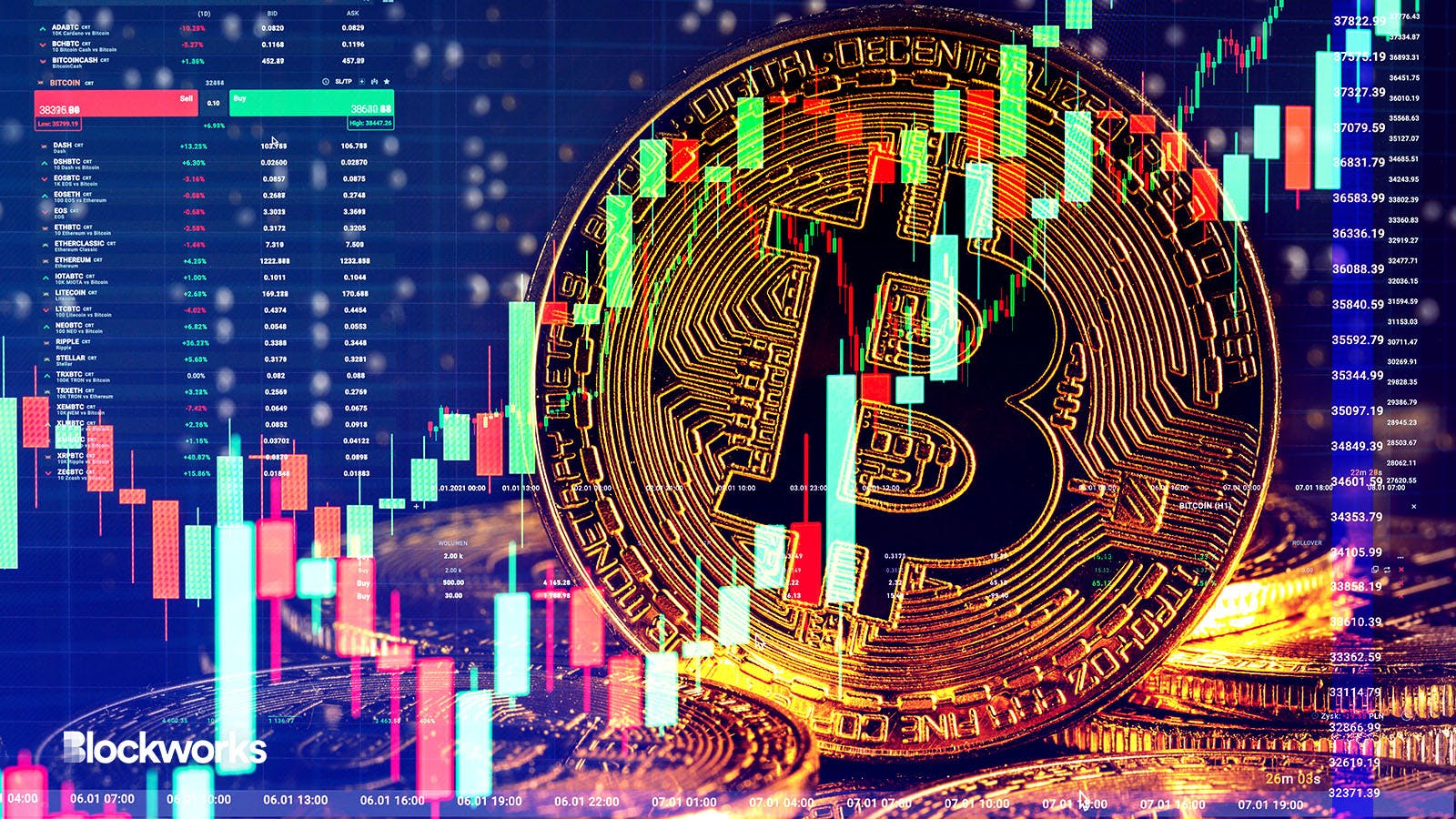Bitcoin exhibits increased trading activity during US hours
Since November 2022, bitcoin posts more significant gains during US hours compared to the Asian and European trading sessions, new research finds

rzoze19/Shutterstock, modified by Blockworks
The world’s largest crypto is showing increased strength and trading activity during US market hours, according to recent data compiled by two industry firms.
In the last week, bitcoin (BTC) has witnessed “staircase-like gains,” forming a pattern of rising prices during US market hours. That tends to stabilize by day’s end, according to research from digital assets brokerage K33.
“US market hours are now the strongest market hours for BTC since the November bottom, after recovering from a challenging period between mid-Feb to mid-June,” K33 said in a research note last week.
BTC has since climbed 62% year-to-date, 13% over the last 30 days and is up 1.5% on the week to $30,700. BTC remains fairly muted on the day — up 0.6%, data from Blockworks Research shows.
The asset’s behavior during US hours contrasts with the relatively stable trading activity during the Asian and European sessions. Since last November, bitcoin has seen more significant gains of 30% during US hours compared to Asia (21%) and Europe (17%).
The majority of the asset’s gains in recent weeks appear to be backed by renewed interest following Blackrock’s spot bitcoin ETF application last month, according to digital asset Australian trading firm Zerocap.
A flurry of spot ETF applications from major US-based financial services firms including WisdomTree, Valkyrie and Fidelity Investments have also helped drive optimism as they vie to become the first to offer such a product.
Net exchange outflows and equity correlation
As such, the accumulation of bitcoin by US traders can also be traced to consistent net outflows (more BTC leaving than entering) from US-based exchanges such as Coinbase, Kraken, and Gemini, Glassnode wrote in a report last week.
“After the LUNA debacle and for much of 2023, off-shore exchanges have seen net inflows, whilst on-shore exchanges are seeing net outflows, as US-based investors accumulate or stay neutral,” Glassnode said.
Bitcoin’s correlation with the US asset indices, including Nasdaq and the S&P 500, has also turned negative for the first time since January 2021, K33 said.
This suggests US traders are investing in BTC for unique reasons specific to the crypto rather than following broader market trends.
Macro factors
Macroeconomic fundamentals leading up to the end of the quarter have been mixed, William Fong, Zerocap’s Treasurer told Blockworks.
“There has been a repricing of short-term bond yields, reflecting expectations of higher interest rates and a potentially longer hiking cycle for the US dollar,” Fong said.
To date, CME Group’s FedWatch Tool indicates market participants have begun pricing in an 85% chance of a 25-point basis hike at the conclusion of the FOMC’s meeting on July 26.
A stronger US dollar relative to other currencies including the flailing Japanese Yen is offsetting part of the momentum in digital assets, Fong added. The dollar index (DXY) has rallied about 1.2% over the past 7 days.
Get the news in your inbox. Explore Blockworks newsletters:
- The Breakdown: Decoding crypto and the markets. Daily.
- 0xResearch: Alpha in your inbox. Think like an analyst.






